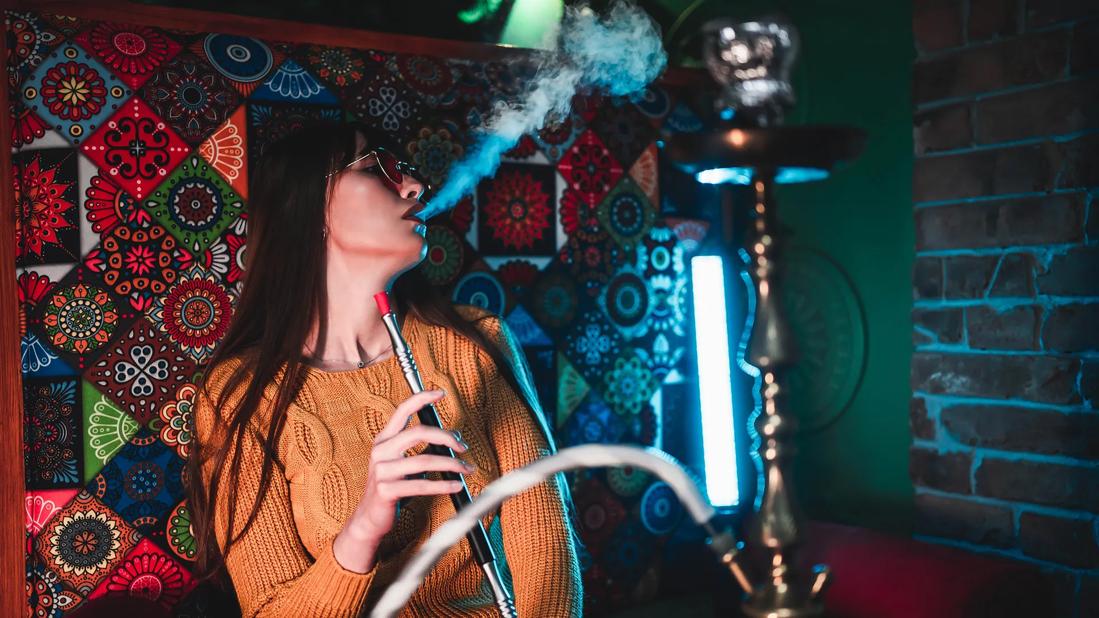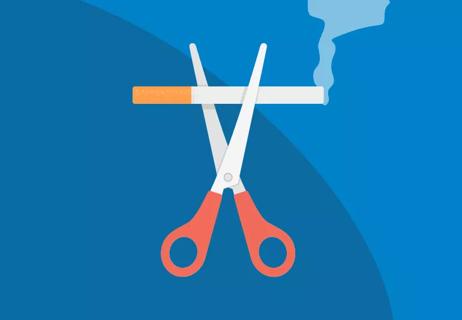From dental diseases to cardiovascular problems, the harmful effects of smoking hookah have plenty of downsides for your health

Smoking hookah may look glamorous to some, but it’s every bit as addictive as cigarette smoking — and maybe more harmful.
Advertisement
Cleveland Clinic is a non-profit academic medical center. Advertising on our site helps support our mission. We do not endorse non-Cleveland Clinic products or services. Policy
Hookahs are water pipes resembling slender metal vases. Charcoal is used to heat a sweet, sticky tobacco, producing smoke that’s filtered through cooled water. The smoke is inhaled through a flexible hose passed from one user to the next.
Whether you regularly partake in this ancient pastime or you’re just now learning about it, pediatrician Ellen Rome, MD, MPH, explains the health risks of smoking hookah. Plus, she gives some insight on how to address hookah smoking habits with your teen.
While hookah comes in many flavors like watermelon and cappuccino, these familiar tastes don’t make them any less harmful to your health.
One of the biggest myths you hear about hookah is that it’s a better alternative to cigarettes. But the smoke from a hookah contains the same cancer-causing chemicals as cigars and cigarettes.
According to a 2019 study review, hookah smokers are exposed to even higher levels of the same toxins and by-products found in cigarettes. “Hookah is not a safe alternative to smoking cigarettes,” states Dr. Rome. “A typical one-hour session involves inhaling 100 to 200 times the volume of smoke inhaled from a single cigarette.”
Hookah smokers inhale carbon monoxide, heavy metals and other toxic compounds given off by the burning charcoal. She also points out that smoking in a group setting creates significant secondhand smoke — especially in hookah cafes.
Advertisement
“Hookah smokers also typically smoke longer and more often, take more puffs and inhale more deeply than cigarette smokers,” she notes. They absorb more nicotine in higher concentrations because of the way the smoke is cooled.
In addition to the standard carcinogen exposure you get from smoking, hookah’s oil-based flavorings are incredibly inflammatory and damaging to small airways in your lungs.
Hookah’s heating elements have metal coils that can also release heavy metal ions that can cause inflammation and substantial damage to your lungs. In addition, smoking a hookah can lower your lungs’ immunity and potentially increase your risk for diseases like bronchitis or pneumonia.
Because hookah is often smoked in a shareable, social setting, it can increase your risk for mouth diseases. And the risks don’t stop there. The U.S. Centers for Disease Control and Prevention (CDC) reports that tobacco juices from hookahs can irritate your mouth and increase your risk of developing oral cancers and gum disease.
Herpes, which causes lip/mouth cold sores, and H. pylori, the most common cause of stomach ulcers, can also be passed via the shared mouthpiece. And breathing plus coughing in others’ faces while sharing a hookah can expose you to colds, flu and other respiratory viruses.
Hookah can also put a strain on your heart. Short-term hookah smoking can cause symptoms like high blood pressure and increased heart rate. But there are risks for developing long-term issues as well. The same 2019 literature review shows that heavy hookah smoking is linked with developing conditions like ischemic heart disease or heart failure.
What’s the main thing that hookah, cigarettes and vaping have in common? They all pose significant health risks. But there are other similarities and differences between the three. And while you may think one is safer than the other, that’s not the case.
Here’s how they compare to each other:
1. Hookah
Advertisement
2. Cigarettes
3. Vaping (e-cigarettes)
You may be worried about your teen getting into hookah and believing the incorrect hype about it. Dr. Rome recommends tackling this topic through a positive, problem-solving approach. “Discuss with your teen what they get out of hookah smoking — and what they could do instead that would be safer,” she suggests. “Let them come up with alternative ideas for safer fun.”
Advertisement
If your teen is looking for closeness with friends, propose other options like preparing dinner together or group outings like a shopping trip, bike ride, picnic or a hangout at a local coffee shop.
She also offers these do’s and don’ts for addressing smoking with your child:
Do
Advertisement
Don’t
Whether it’s you or your child who’s experimenting with hookah, it’s important to understand the risks behind it. You may have heard that certain types of smoking are less risky than others, but hookah can pose just as much of a risk as cigarettes. It’s best to stay away from all types of nicotine inhalation for the sake of your well-being (and those around you).
Talk to a healthcare provider if you want to learn more about the risks or how smoking hookah may affect you or your child’s health. And don’t be afraid to ask for help with quitting.
Learn more about our editorial process.
Advertisement

Smoking can make symptoms from cancer treatment worse, and can even make treatments less effective

Vaping exposes you to thousands of chemicals, including many that cause cancer and lung disease

Even only a couple cigarettes a day can lead to potentially deadly lung diseases like COPD and emphysema

Your risk goes down once you quit, but you may still need a lung cancer screening

Cigarettes increase your risk of developing the condition and worsening its effects

Health benefits start within 20 minutes and continue to grow for years after

Each comes with substantial health risks and should be avoided

Start having sex about 72 hours before ovulation, then at least every other day during your fertile window

Attachment theory suggests that your earliest relationships shape connections throughout your life

It isn’t a recognized mental health disorder, but research shows that problematic social media use can negatively affect your mental health, self-esteem and sleep